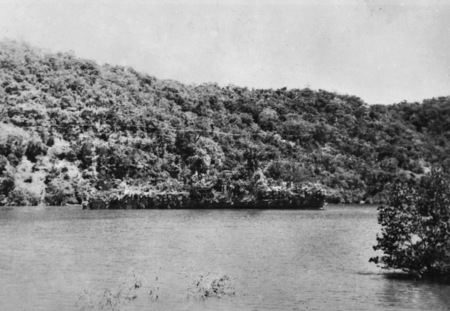Name Abraham Crijnssen Launched September 22, 1936 Role Ship Draft 2.10 m | Length 56 m Builder Schiedam Commissioned May 27, 1937 | |
 | ||
Similar Dutch Navy Museum, HNLMS Schorpioen, Willemsoord - Den Helder, HNLMS Buffel, Fort Kijkduin | ||
Construction started March 21, 1936 | ||
HNLMS Abraham Crijnssen- the ship that was disguised as a tropical island
Abraham Crijnssen (?, Vlissingen – 1 February 1669, Paramaribo) was a Dutch naval commander, notable for capturing Surinam from the British in 1667 during the Second Anglo-Dutch War. The minesweeper HNLMS Abraham Crijnssen and the frigate HNLMS Abraham Crijnssen have been named after him.
Contents
- HNLMS Abraham Crijnssen the ship that was disguised as a tropical island
- Hr ms abraham crijnssen eskaderreis 1989
- 1632 1665
- Suriname
- Tobago Sint Eustatius Martinique
- Virginia
- Suriname recaptured
- References

Hr ms abraham crijnssen eskaderreis 1989
1632-1665

Crijnssen was probably born in Vlissingen. His date of birth is unknown. In 1632 he commanded the Samson and the Vlissingen, two ships belonging to a fleet of 12 privateers owned by the brothers Lampsins. Crijnssen inflicted much damage on the Dunkirk Privateers, and distinguished himself in 1639 during the Battle of the Downs.
In 1665, he was commander at the Admiralty of Zeeland. First he served as first captain under Adriaan Banckert, but in the autumn he was appointed captain of the Prins te Paard. He fought at the Four Days' Battle and the St. James's Day Battle as commander of the frigate Zeelandia.
Suriname
In December 1666, Crijnssen received the command over a squadron, composed of the frigates Zeelandia, West-Cappelle and Zeeridder, and 4 smaller ships, including the Prins te Paard. He was sent to the West Indies and the east coast of North America in an expedition against the English.
Crijnssen left Veere on December 30 with 700 men aboard, including more than 200 soldiers. On February 25, 1667 he reached the Suriname River where the English fort Willoughby was situated. After a short bombardment the English surrendered the fort and on March 6 they gave up the entire colony. Crijnssen renamed the fort Fort Zeelandia and left a garrison behind. The West-Capelle captured the English frigate York, and sailed back to Zeeland in October 1667 with 1000 pounds of elephant teeth from the York.
Tobago, Sint-Eustatius, Martinique
On April 17 Crijnssen had already left to liberated the Dutch colonies of Berbice, Essequibo and Pomeroon, but at arrival the learned that the English had already been expelled. He then sailed to Tobago and found the fort destroyed. After rebuilding it and leaving a garrison, he sailed on May 4 to Sint Eustatius, which he reconquered. He then headed for Martinique where he joined forces with a French fleet to face a strong English force near the island of Nevis. He was forced to abort the battle, because of poor collaboration between Dutch and French.
Virginia
After this battle, Crijnssen sailed to Virginia, where he surprised in the mouth of the James River an English commercial fleet, ready to cross the ocean with a cargo of tobacco. He captured the English escort warship, spread his men over 11 merchant ships, and burned the rest. He then sailed back to Vlissingen with his prizes, where he arrived on August 25. Crijnssen received a hero's welcome and received a golden chain.
Suriname recaptured
In February 1668, Crijnssen was sent back to Suriname with 3 ships. Despite the fact that the Treaty of Breda (1667) had given Suriname to the Dutch, the English had retaken Fort Zeelandia in October 1667. Crijnssen arrived in Suriname on April 20, and by April 28 the whole of Suriname was firmly back in Dutch hands. It was to remain a Dutch possession until 1975.
